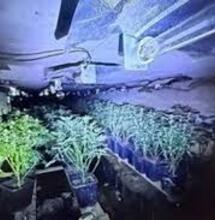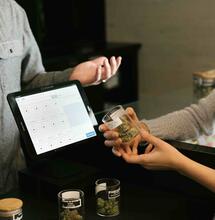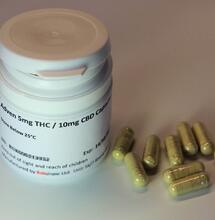The Dutch 15% Rule

The government of the Netherlands recently announced the proposal of a new law that would redefine any Cannabis product containing more than 15% THC as a hard drug. It would preclude sales of most hashish, especially the ice- or cold water extracted varieties the Netherlands is so famous for - and according to some, up to 80% of the herbal Cannabis varieties currently sold in coffeeshops. Any establishment found during routine checks to be stocking illegally potent strains would be subject to fines, and upon repeated violations, potential closure and loss of license.
The government of the Netherlands recently announced the proposal of a new law that would redefine any Cannabis product containing more than 15% THC as a hard drug. It would preclude sales of most hashish, especially the ice- or cold water extracted varieties the Netherlands is so famous for - and according to some, up to 80% of the herbal Cannabis varieties currently sold in coffeeshops. Any establishment found during routine checks to be stocking illegally potent strains would be subject to fines, and upon repeated violations, potential closure and loss of license.
The government of the Netherlands recently announced the proposal of a new law that would redefine any Cannabis product containing more than 15% THC as a hard drug. It would preclude sales of most hashish, especially the ice- or cold water extracted varieties the Netherlands is so famous for – and according to some, up to 80% of the herbal Cannabis varieties currently sold in coffeeshops. Any establishment found during routine checks to be stocking illegally potent strains would be subject to fines, and upon repeated violations, potential closure and loss of license.
The passing of the new law would involve the modification of the existing Opium Act, a procedure that has often been claimed to be nigh on impossible to achieve. In the past this argument has been used as a way to explain previous governments’ reluctance to legalize Cannabis; that legislating against Cannabis would be so easily accomplished is extremely telling of the political direction the nation is taking. Although the proposal is ostensibly made with the developing youth, the unwary tourist and the hopeless addict in mind, it seems that it is truly intended to further frustrate and hinder the beleaguered ranks of the coffeeshop owners – as part of the ongoing campaign to make business so full of red tape and taxes as to be unappealing, and indeed nonviable.
Opponents of the law have pointed out several fairly glaring errors of judgment inherent in the proposal. Perhaps most pressingly: while a very slim selection of at-home THC testing kits is available, it is very difficult to test THC levels in Cannabis at point-of-sale. Most kits work on the basis of thin layer chromatography (TLC) and require a control specimen (of which the THC percentage is confirmed) for purposes of comparison.
If these control specimens were to be acquired through liaising with a lab, specimens would then need to be kept in a state where the THC would not degrade (unless specimens were sent out to all coffeeshops every few days – which would be ridiculous, not to mention costly.) Providing such optimum conditions may not be possible for most coffeeshops, who are by their very nature not laboratories. Just sticking it in the deep freeze is not quite what is meant by a scientific approach, after all. Without a control specimen, the most a TLC test can really do is show the existence of different cannabinoids and give a rough idea of the ratios in which they are present.
| One of the few available DIY testing kits for cannabinoids (Photo: Montana Biotech) |
The common preference for clones is a double-edged sword: while one can be sure the genetic profile of the clone is identical to the mother's, clones are only available through the black market and the likelihood of such genetics to be rigorously tested and reliable is low. Potential THC percentage may in the future be discoverable through genomic testing of young clones or seedlings; however, such technology is in its infancy and is unlikely to be available for some years. It is also very unlikely that growers or coffeeshops would be able to accurately implement such exacting procedures.
| To ensure valid results, specialized conditions and equipment must be used (Photo: TounoTouji) |
Secondly, the argument fails to take into account the importance of the cannabinoid ratio, which includes myriad different compounds whose individual effects on humans are yet to be determined – let alone the effects of their countless different combinations. Specimens of Cannabis that fall within the 15% THC limit may contain ratios of other cannabinoids that moderate the overall effect in particularly harmful or undesirable ways. Until we know more about this vastly complex interaction between our two species, an arbitrary rule such as this makes no sense and may well do more harm than good.
| The Dutch coffeeshops are not having an easy time of late (Photo: Liber) |



